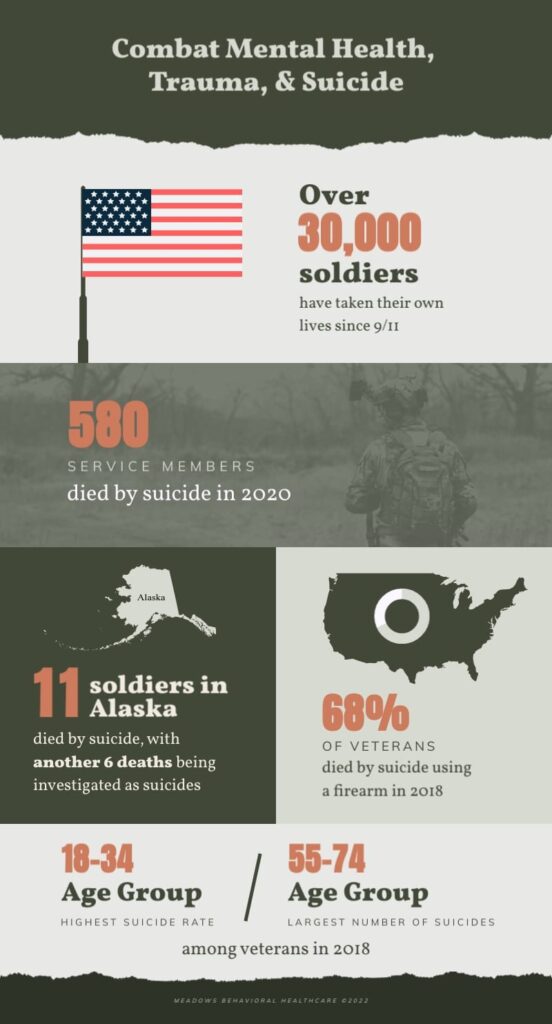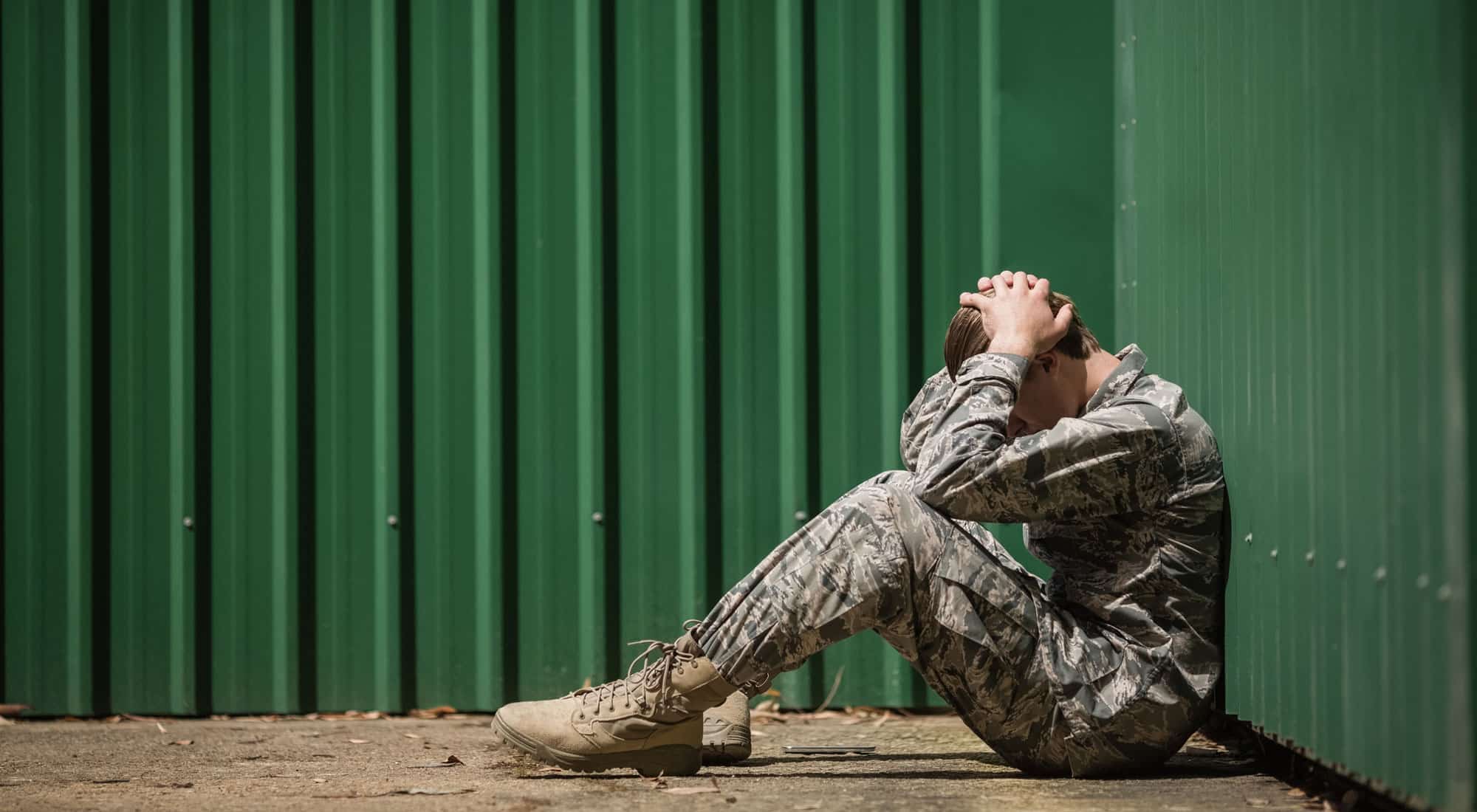By Anna McKenzie
It may be shocking to discover that the deadliest threat to active US military members and veterans is not combat, it’s suicide. The United Service Organizations (USO) and other associations are taking steps to prevent suicide among our soldiers, especially those who are at higher risk due to military trauma, stress, or mental health concerns. If you have a friend or family member who is a current or former member of the armed services, it’s important to know the risk factors and how you can help prevent tragic outcomes.
It may be shocking to discover that the deadliest threat to active US military members and veterans is not combat, it’s suicide.
Military Suicide Rates: Facts & Statistics
Military suicide rates have increased year over year, especially among those who are actively serving. But the risk of suicide does not go away once active service is completed: Suicide rates among veterans are two to three times higher than in the general population, according to RAND research.
Here are the facts about military suicide rates:

Risk Factors for Military Suicides
There are some clear risk factors for suicide among active military service members and veterans. These are important to understand and be aware of for preventative measures:
- Combat Trauma
Combat trauma (or military trauma) is a strong contributor to suicide risk. National Library of Medicine research suggests that up to 16% of service members who were deployed to Iraq or Afghanistan have post-traumatic stress disorder (PTSD) or depression. In 10-20% of PTSD cases, symptoms can become life-disrupting. A large 2019 study published in the American Journal of Preventative Medicine found that veterans with PTSD were more likely to die of suicide, accidental injury, or viral hepatitis than the general population.
- Demographics
The 2020 DoD Annual Suicide Report (ASR) found that suicide rates were the highest among enlisted male service members under the age of 30 across all services, including the Reserve.
- Improper Firearm Storage
Improper storage can increase risk of suicide, even though 66% of active service members surveyed in the DoD ASR believed the misconception that “suicide risk is not related to how a firearm is stored.”
- Isolation
Isolation is commonly known as a risk factor for suicide in general, but may be worse for soldiers. It’s suspected that one of the reasons why Alaska bases have a higher rate of suicide is due to geographic isolation, days with less sunlight, and a stronger sense of disconnection from others.
Improving Military Mental Health
The USO and other organizations are working to improve military mental health in a number of ways, especially by expanding our service members’ sense of connection to family and others. Increasing mental health screenings, boosting economic support, and creating a protective environment are also part of the plan to improve the physical, mental, and emotional well-being of our soldiers.
- Stars and Stripes reported there’s a proposed initiative in Alaska to pay soldiers more in order to decrease financial stress. It would also offer a car-sharing program to reduce isolation, and increase the number of behavioral health providers to decrease the wait time for mental health appointments.
- USO centers are working to create friendly, social environments that include free Wi-Fi access, computers, and international calling. In some centers, there’s a special program that allows servicemen and women to record and send home a reading of their child’s favorite book to stay more connected to their families.
- The US Department of Veterans Affairs and the Substance Abuse and Mental Health Services Administration (SAMHSA) have offered to assist state and local government leaders in preventing suicide among service members, veterans, and their families. As of 2020, 27 states were participating in this effort.
Poor mental health, isolation, and PTSD can be debilitating for service members. Some may turn to substances in order to cope with their pain and distress. Heavy drug or alcohol use will only worsen conditions and increase the risk of suicidal thoughts or behaviors.
Increasing mental health screenings, boosting economic support, and creating a protective environment are also part of the plan to improve the physical, mental, and emotional well-being of our soldiers.
Military Addiction and Mental Health Help
If you have a loved one who is a service member suffering from mental health conditions or substance use, there are a couple steps you can take immediately to help. First, consult this toolkit on the safe storage of firearms to help prevent your loved one from harming themselves or someone else. Second, reach out to a treatment professional. Our team at The Meadows is ready to help your loved one recover from addiction and mental health issues. Simply contact us today to learn more about our research-backed programs.

